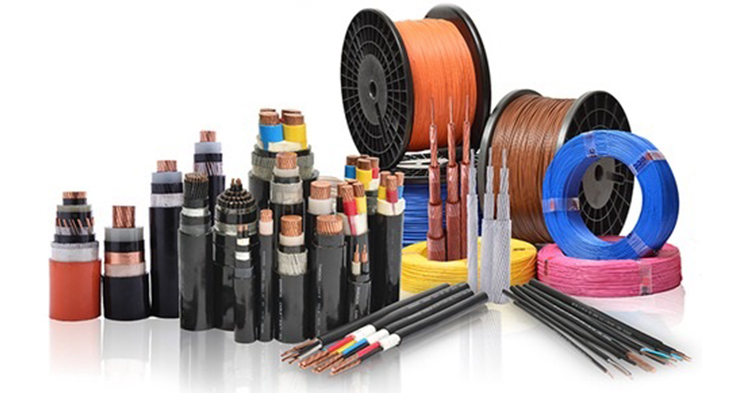
"Make in India"
Phone No:
+91 82002 08625
606, Shilp Zaveri, Shyamal Cross Road, Ahmedabad, Gujarat
Email Address:
sunpower5892@gmail.com

We have various types of Wires and Cables available with us. Low Tension Cables, submersible cables, House Wires, Flexible cables, HDMI, Armored, Unarmored and many others. Avocab, Polycab, RR, Jainson and Fybros are some of the brands we supply.

Sunpower Luminaire is leading certified exporter, traders, dealers and suppliers of Wires and Cables in ahmedabad, gujarat, india
Wires and cables are essential components of electrical and electronic systems, enabling the transmission of electrical signals and power from one point to another. They are used in a wide range of applications, from simple household wiring to complex industrial and telecommunications systems.
Here are some key points about wires and cables :
Definition :
A wire is a single conductor, typically made of metal (e.g., copper or aluminum), that carries electrical current from one point to another. Wires are often used for simple electrical connections and can be insulated or uninsulated.
A cable consists of one or more wires bundled together and often enclosed in a protective sheath. Cables are used when multiple conductors are needed for transmitting power, data, or signals.
Types of Wires and Cables :
Power Cables : These cables are designed to transmit electrical power from a source (e.g., a power outlet or generator) to devices and appliances. They are often insulated and come in various sizes and configurations.
Data Cables : Data cables are used for transmitting data signals between devices. Examples include Ethernet cables for computer networks, HDMI cables for audio and video, and USB cables for connecting peripherals.
Coaxial Cables : Coaxial cables are commonly used for cable television, internet connections, and some types of data transmission. They consist of a central conductor, an insulating layer, a metallic shield, and an outer insulating sheath.
Fiber Optic Cables : Fiber optic cables use light signals to transmit data over long distances at high speeds. They are often used in telecommunications and high-speed internet connections.
Control Cables : These cables are used to transmit control signals, such as those in industrial automation systems. They often contain multiple conductors and are designed for flexibility and durability.
Thermostat Wire : This type of cable is commonly used for low-voltage applications like connecting thermostats to HVAC (heating, ventilation, and air conditioning) systems.
Insulation : Most cables are insulated to prevent electrical leakage and protect against physical damage. The type of insulation used depends on the application and environmental conditions.
Wire Gauge : The gauge or thickness of a wire is an important factor in determining its current-carrying capacity. Thicker wires can carry more current without overheating.
Connectors : Cables often have connectors on one or both ends to facilitate easy connections to devices or other cables. Connectors come in various types and sizes, such as USB, HDMI, RJ45 (Ethernet), and more.
Installation : Proper installation of wires and cables is crucial for safety and performance. Electrical codes and standards govern how wires and cables should be installed to ensure compliance with safety regulations.
Wire Color Codes : Many types of wires use color codes to identify their functions. For example, in electrical wiring, black or red wires are often used for hot or live wires, white or gray wires for neutral, and green or bare wires for ground.
Wires and cables are fundamental components in the modern world, enabling the transmission of power, data, and signals in various industries and everyday applications. Proper selection, installation, and maintenance are essential for reliable and safe operation